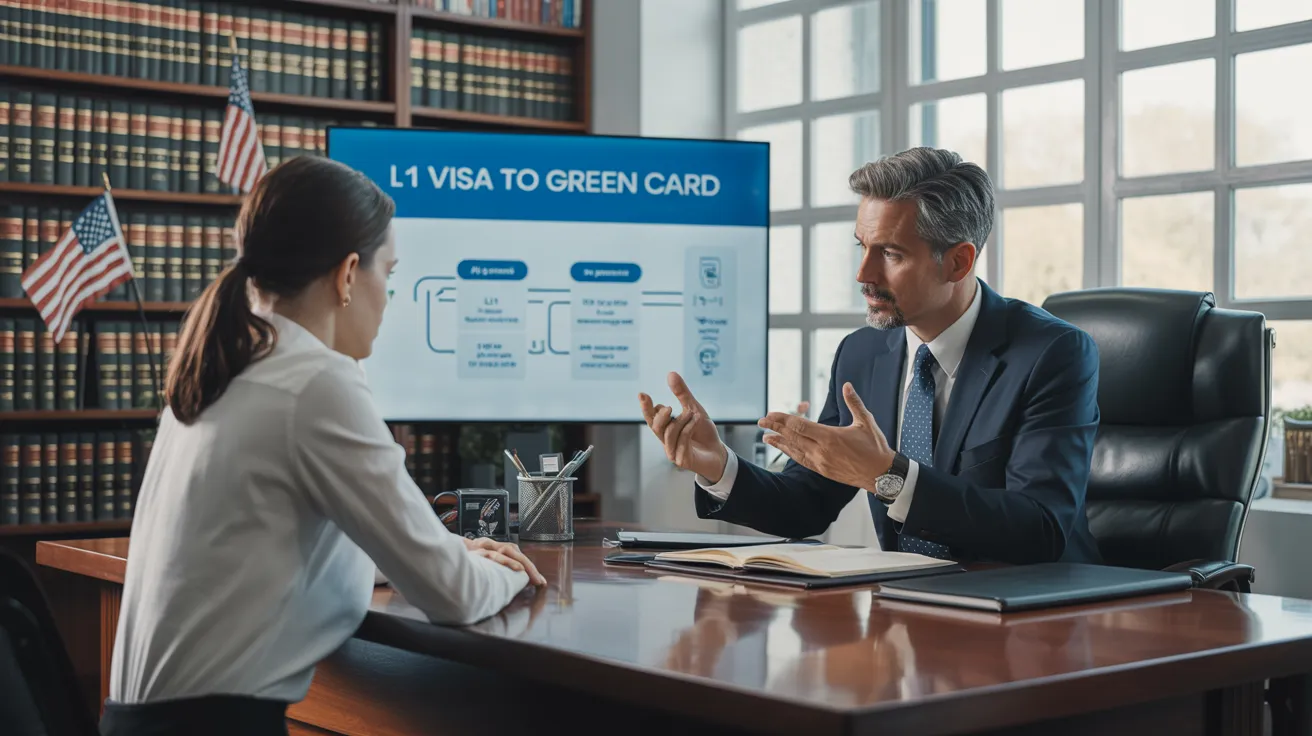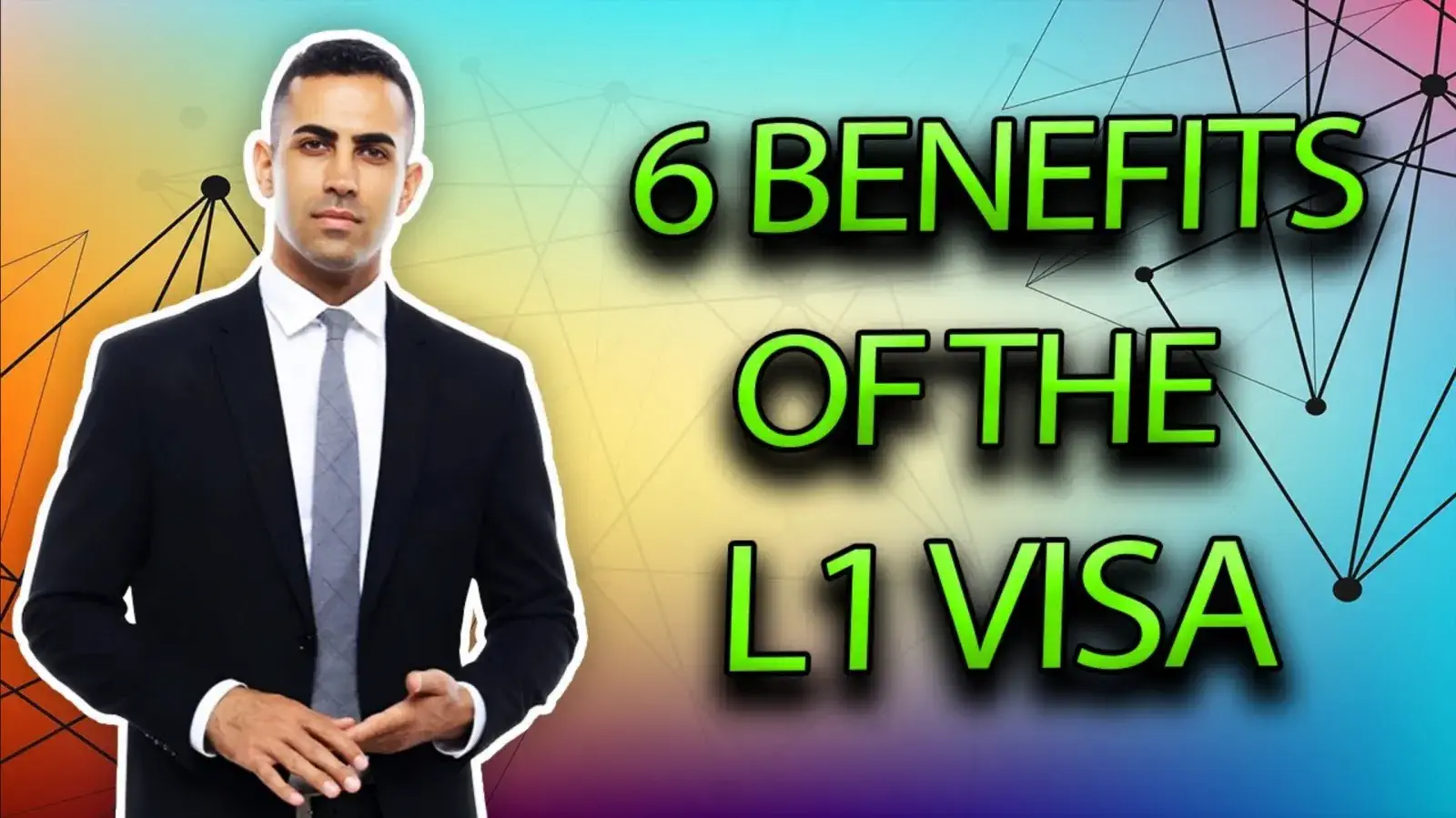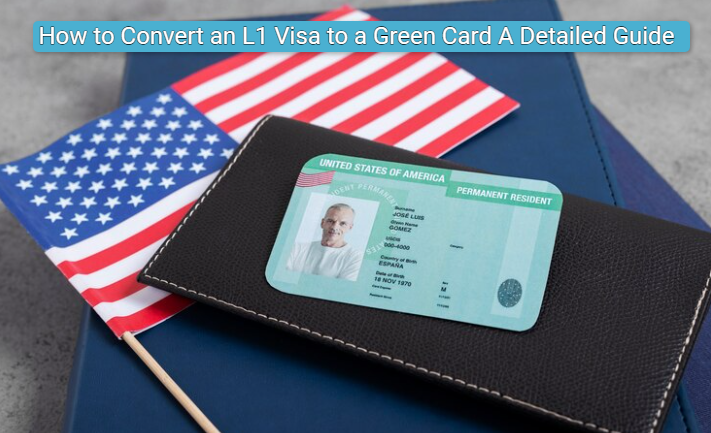Opening Opportunities: A Comprehensive Overview to the L1 Visa Process
The L1 visa procedure offers an essential pathway for international companies seeking to transfer essential staff members across boundaries. Recognizing the subtleties of qualification requirements, the distinctions in between L-1A and L-1B visas, and the ins and outs of the application procedure can considerably influence a candidate's success. Nonetheless, steering this complex landscape is not without its difficulties, and cautious attention to documentation and employer sponsorship is vital. As we check out the key elements of this process, the strategies for getting over possible barriers will come to be apparent, exposing just how notified preparation can open up a globe of opportunities.
Understanding the L1 Visa
Understanding the L1 visa entails identifying its relevance as an important tool for international business looking for to transfer competent workers in between international offices. This non-immigrant visa group promotes the motion of executives, managers, and specialized knowledge employees to the United States, therefore enabling companies to preserve functional continuity and harness global skill efficiently. The L1 visa is separated into two key classifications: L-1A for supervisors and executives, and L-1B for staff members possessing specialized knowledge.The L1 visa offers a critical role in improving a company's one-upmanship in the worldwide industry - L1 Visa. By permitting firms to relocate their key workers, organizations can ensure that critical jobs are managed by certified individuals who are already aware of the company's culture and functional processes. This inner transfer system not only cultivates expertise sharing however additionally promotes development and partnership throughout borders.Moreover, the L1 visa is frequently favored for its reasonably simple application process contrasted to various other visa groups, as it permits double intent, allowing owners to pursue permanent residency while on a momentary job visa. This function makes the L1 visa specifically appealing for both companies and workers, as it streamlines the path for skilled professionals to develop lasting residency in the United States
Eligibility Criteria
Eligibility for the L1 visa hinges on a number of essential standards that assure both the employee and the employer meet certain credentials. This non-immigrant visa is designed for multinational business to transfer employees from international offices to united state counterparts.Firstly, the employer has to be a qualifying company, that includes a moms and dad business, branch, associate, or subsidiary of an U.S. organization. The firm has to have been doing service for at the very least one year both in the U.S. and abroad. This guarantees that the company has adequate functional stability and a genuine presence.Secondly, the staff member has to hold a managerial, exec, or specialized understanding setting. For L1A visas, the applicant needs to demonstrate managerial or executive credentials, while L1B visas concentrate on specialized understanding pertaining to the company's products, solutions, or processes. In addition, the employee has to have benefited the foreign entity for at the very least one continuous year within the last 3 years prior to their application.Lastly, the employee's function in the U.S. should straighten with their previous position, making certain that their skills and know-how are leveraged for the business's benefit.
Types of L1 Visas
The L1 visa group comprises 2 main kinds designed to promote the transfer of employees within international firms: the L1A visa for managers and execs, and the L1B visa for staff members with specialized knowledge. Each type offers distinct objectives and has particular qualification criteria.The L1A visa is tailored for people that hold supervisory or executive positions within a business. This visa enables top-level staff members to transfer to an U.S. branch, subsidiary, or associate of the exact same organization. Candidates for the L1A visa need to demonstrate that they have been utilized in a supervisory or executive capability for at the very least one continual year within the past three years prior to their application. Furthermore, this visa uses a much longer period of stay, at first given for 3 years, with the opportunity of expansions for as much as 7 years.In comparison, the L1B visa is intended for experts with specialized understanding relevant to the business's products, services, or processes. To certify, candidates need to prove that their experience is critical to the company and that they have actually worked for at the very least one continual year within the last 3 years in a duty that needed this specialized knowledge. The L1B visa is at first granted for three years, with extensions readily available for up to five years.Both visa types are essential for firms seeking to improve their international procedures by leveraging proficient personnel, thus promoting technology and effectiveness within the united state market.
Application Process
Guiding with the L1 copyright procedure entails a number of essential steps that have to be diligently complied with to ensure an effective end result. The procedure starts with the U.S. employer, who need to initially develop eligibility by showing a qualifying relationship with the foreign entity and verifying that the employee fulfills the certain demands for the L1 visa classification being sought.Once qualification is verified, the employer initiates the procedure by filing Form I-129, the Application for a Nonimmigrant Employee, with the U.S. Citizenship and Migration Provider (USCIS) This form has to be accompanied by a comprehensive description of the task duties to be performed, the organizational framework of both the U.S. and international entities, and the staff member's certifications. It's important to validate that all info is accurate and full, as omissions or errors can result in delays or denials.Upon authorization of the I-129 petition, the next action includes the employee looking for the L1 visa at a united state consular office or consulate in their home nation. This stage calls for the completion of Type DS-160, the Online Nonimmigrant copyright, and arranging a meeting. Throughout the interview, the applicant has to provide evidence sustaining their qualifications and the company's petition.After the visa is granted, the employee can get in the USA to operate in the designated duty. Overall, cautious preparation and adherence to every step of the application procedure are important for an effective L1 visa outcome.
Needed Documentation

Crucial Forms Required
Maneuvering the L1 Visa process calls for mindful interest to the essential forms and documents needed for an effective application. The primary kind required is the Kind I-129, Request for a Nonimmigrant Employee, which need to be completed and sent by the U.S. employer. This form lays out the information of the employment deal and the qualifications of the worker looking for the L1 Visa.Alongside Type I-129, the applicant will need to total Form I-539 if accompanying relative are additionally making an application for visas. Additionally, the employer has to give evidence of the qualifying partnership in between the U.S. entity and the international entity, typically requiring the submission of business documents such as short articles of incorporation or economic statements.Moreover, it is vital to include the L Classification Supplement to Form I-129, which defines the type of L Visa being asked for-- either L-1A for managers and execs or L-1B for staff members with specialized understanding. Lastly, candidates ought to assure that all types are signed and dated properly, as incomplete submissions can result in delays or denials. Appropriately assembling these crucial kinds lays the foundation for a smoother L1 copyright process.

Supporting Evidence Requirements
Sustaining documents is crucial for a successful L1 copyright, as it confirms the claims made in the petition. Applicants need to provide a series of records to show eligibility for the visa, which is classified into 2 key kinds: proof of the certifying relationship in between the united state and international entities and evidence of the candidate's qualifications.To develop the partnership, applicants ought to submit documents such as corporate organizational graphes, financial declarations, and proof of possession. These documents confirm that the international business has a certifying connection with the U.S. company, whether as a moms and dad company, subsidiary, branch, or affiliate.For the applicant's qualifications, vital files include a comprehensive employment letter from the international employer, laying out the candidate's task title, tasks, and period of work. Additionally, instructional qualifications, such as degrees and diplomas, must be provided to confirm the candidate's competence in the appropriate field.
Company Sponsorship Documents

Common Challenges
Steering the L1 visa process provides numerous common obstacles that applicants must be mindful of. Trick issues often consist of rigid paperwork needs, potential delays in handling times, and the necessity for stringent legal compliance. Recognizing these obstacles can aid candidates better prepare and reduce threats throughout their copyright journey.
Paperwork Needs
The L1 copyright process usually provides substantial obstacles associated with paperwork demands. Candidates have to provide substantial paperwork to develop qualification, which can result in confusion and prospective hold-ups. Key files consist of evidence of a certifying relationship between the U.S. and international employer, evidence of the applicant's work background, and thorough information concerning the job role in the U.S.One usual obstacle is collecting enough proof to demonstrate the nature of the qualifying connection. Business commonly have a hard time to existing clear organizational graphes or economic statements that highlight the link in between the entities. On top of that, ensuring that letters of assistance from employers precisely mirror the applicant's task obligations and certifications is essential, as obscure descriptions can result in denials.Another issue occurs from the requirement for detailed job descriptions that straighten with the L1 visa classifications. Candidates should articulate not just their existing role yet additionally their supervisory or specific knowledge responsibilities plainly. This demands a detailed understanding of both the candidate's placement and the regulatory language made use of in L1 applications.
Handling Dead Time
Experiencing hold-ups in processing times is a common difficulty dealt with by L1 visa candidates, usually leading to disappointment and unpredictability. Several aspects add to these hold-ups, consisting of high application volumes, increased examination of applications, and management stockpiles within the U.S. Citizenship and Migration Services (USCIS) Applicants may discover that handling times can vary significantly relying on the service facility handling their application, as each facility has its very own work and efficiency degrees. Additionally, the intricacy of the applicant's situation, such as the demand for extensive documents or explanation, can additionally prolong wait times.In some circumstances, issues associated to the applicant's existing migration status or previous visa history might also cause added delays, as USCIS may call for additional review or details. It is important for candidates to stay aggressive during this duration, maintaining open communication with their companies and legal agents to attend to any kind of potential worries promptly.Understanding these processing time challenges can assist L1 visa candidates prepare for feasible delays and mitigate the impact on their shift and job plans. Persistence and diligence are crucial merits in steering this complex process.
Legal Conformity Issues
Several L1 visa candidates experience legal compliance issues that can complicate their trip toward acquiring the visa. Comprehending and sticking to the details guidelines established by the U.S. Citizenship and Migration Provider (USCIS) is important. Typical difficulties consist of showing the qualifying relationship between the foreign and L1 Visa U.S. employers, in addition to confirming that the candidate possesses the requisite specialized knowledge or managerial capacity.Additionally, applicants have to give comprehensive documentation outlining their work obligations, company structure, and financial stability of the united state entity. Insufficient or unreliable documentation can bring about delays and even rejections. Employers must additionally guarantee that they adhere to labor legislations, including wage and functioning problem standards, which can impact visa eligibility.Another usual problem involves maintaining compliance with the terms of the visa when approved. Changes in employment status, task obligations, or company structure can necessitate modifications to the visa, which otherwise resolved immediately can cause lawful complications. Consequently, remaining notified regarding conformity demands and seeking lawful advise when needed is necessary to browse the intricacies of the L1 visa process effectively.
Tips for Success
Success in the L1 copyright process usually hinges on thorough preparation and interest to detail. To boost your chances of authorization, start by thoroughly comprehending the qualification requirements for both the L1A and L1B visa categories. Examine whether your position at the firm certifies as managerial, exec, or specialized expertise, as this classification significantly influences your application.Next, collect comprehensive documents that substantiates your cases. This includes organizational charts, in-depth work descriptions, and evidence of the company's operational structure. Clear and succinct proof of the certifying connection between the united state entity and the foreign entity is crucial. Validate that all documents are organized rationally and offered in a professional way, as this mirrors your commitment and seriousness about the application.Engage the services of a seasoned migration attorney who focuses on L1 visas. Their competence can show invaluable, directing you through complicated laws and ensuring that all documentation adheres to existing laws. In addition, plan for the meeting by practicing responses to common concerns and preparing to discuss your duty and contributions to the firm comprehensive.
Often Asked Inquiries
Can Household Members Go Along With the L1 Visa Holder?
Yes, relative of L1 visa owners, including partners and single youngsters under 21, can come with the main visa holder. They might likewise make an application for L2 visas, which permit them to reside in the United States.
For How Long Can I Remain on an L1 Visa?
The L1 visa allows preliminary remains of approximately three years, with the opportunity of extension. L1A visa holders might remain for an optimum of 7 years, while L1B visa owners can continue to be for 5 years.
Can L1 Visa Holders Make An Application For an Environment-friendly Card?
Yes, L1 visa owners can request a copyright. L1 Visa Requirements. They may seek long-term residency through employment-based groups, usually needing sponsorship from their employer, provided they fulfill the essential certifications and paperwork demands
What Happens if My L1 copyright Is Refuted?
If your L1 copyright is refuted, you might get a notice detailing the reasons for denial. You can look for to appeal the decision, reapply, or check out different visa options based upon your scenarios.
Are There Any Type Of Traveling Restrictions With an L1 Visa?
An L1 visa normally permits for worldwide traveling; however, re-entry to the united state is contingent upon maintaining valid condition. Travelers ought to assure conformity with visa problems to avoid problems upon return
Verdict
